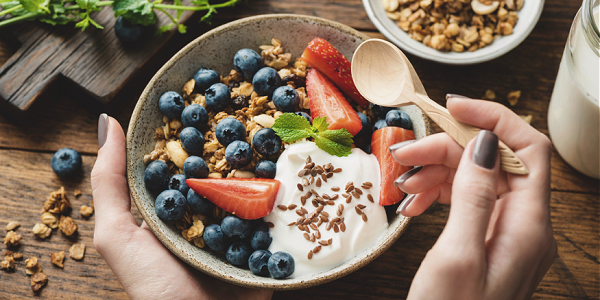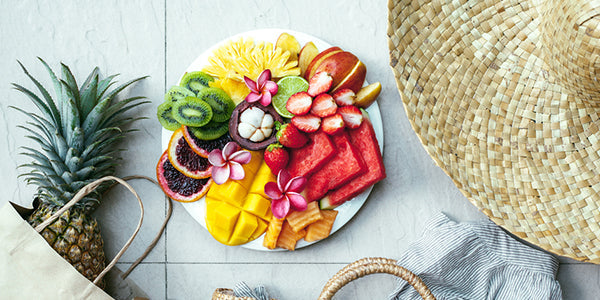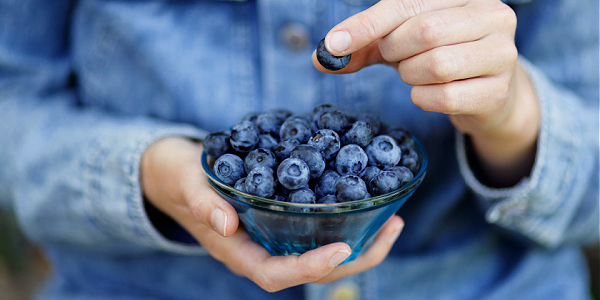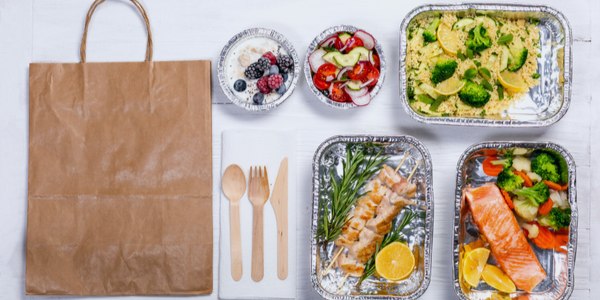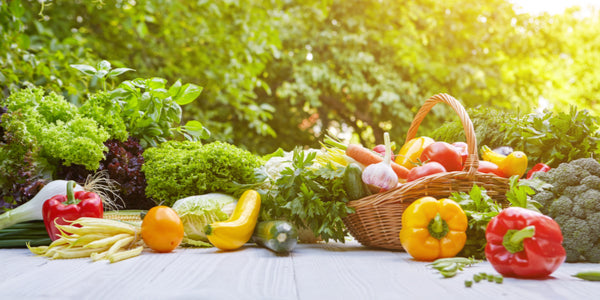
One step to healthier living is healthier eating practices, which may entail maintaining a low-sodium diet. While sodium contributes to good health, including balancing electrolytes and normalizing fluids in the body, WebMD explains salt is a major contributor to high blood pressure, or hypertension, which affects approximately one in three Americans.
Unfortunately, high blood pressure develops slowly overtime, displays no symptoms, and often causes damage to many organs such as the heart, kidneys, brain and eyes – the very reason hypertension is also known as the "silent killer."
Low-sodium diets are often recommended to help improve blood pressure levels, as adhering to a low-salt diet diet can also reduce damage to internal organs and lower the risks of stroke, heart failure, osteoporosis, kidney disease, and certain types of cancers.
Sodium Recommendations and Sources
The American Heart Association (AHA) recommends no more than 2,300 milligrams (mg) a day and an ideal limit of less than 1,500 mg per day for most adults, especially for those with high blood pressure. The AHA further suggests even cutting back by 1,000 mg a day can improve blood pressure and heart health.
Sodium can be naturally sourced in foods, though salt is often added to processed and convenience products to enhance flavor and prolong shelf life. More obvious sources of sodium include breads and rolls, pizza, soup, and deli meats, they it can also be "hidden" canned vegetables, sauces, condiments, cheeses, and salad dressings.
Tips for Achieving a Low-Salt Diet
If advised to start incorporating food low in sodium, but not sure where to start, these tips can help ease your transition to a low-salt diet.
Read nutrition labels to find foods with low sodium or no sodium foods.
Food labels allow consumers to identify sodium content, particularly on packaged and boxed foods. The following sodium claims are often found on food labels and can help navigate food choices:
• Sodium-Free: Less than 5 mg per serving
• Salt-Free: Meets requirements for sodium-free
• Low-Sodium: 140 mg sodium or less per serving
• Very Low Sodium: 35 mg or less per serving
Additionally, check the milligrams of sodium per serving on the Nutrition Facts label to evaluate the product. Additional sodium descriptions include the following:
• Reduced Sodium: Contains at least 25 percent less sodium compared to the regular version of the product
• Light in Sodium: Contains 50 percent less sodium per serving compared to the amount of sodium in a regular version of the product
• Unsalted, Without Added Salt, and No Salt Added: No salt is used in the processing of the product, when the product would normally be processed with salt (such as unsalted pretzels versus regular pretzels); this does not entitle the product to be "sodium-free"
Nonetheless, checking the percent of the daily value (%DV) for sodium is a sound method to monitor sodium intake. If the %DV is 5 or less, it is considered a food low in sodium.
So whenever in doubt of you are choosing low salt foods, take advantage of Nutrition Facts and Ingredients labels.
Choose fresh fruits and vegetables.
If directed to a "no sodium diet," consuming fresh fruits and veggies is your way to go! They are naturally foods low in sodium and a mainstay of the DASH diet, also known as Dietary Approaches to Stop Hypertension, which was developed in aim to reduce high blood pressure.
Enjoy a variety of fresh fruits and veggies, including apples, oranges, bananas, cantaloupes, tomatoes, broccoli, and spinach. Be cautious of frozen veggies with added sauces and be sure to rinse canned vegetables.
And in addition to increasing fresh fruits and veggies, the DASH Diet encourages whole grains, low- or non-fat dairy products, fish and poultry, legumes, nuts and seeds to improve blood pressure.
Limit processed foods.
The average American diet is said to contain 3,400 milligrams of sodium daily with more than 70 percent of the consumption coming from processed and restaurant foods.
And even if they do not taste salty, most processed foods are likely loaded massive amounts of sodium. So naturally, limiting these sorts of foods, or at least utilizing their food labels, can help reduce overall salt intake.
Avoid adding salt when cooking and eating and use herbs instead. Food with low sodium is perceived to taste bland and, well, unappealing. But instead of using the salt shaker salt to add flavor, try the following tricks:
• Veggies: olive oil or balsamic vinaigrette to kick it up a notch.
• Potatoes: use roasted garlic to add a bit of zest.
• Eggs: In place of salting your eggs, use a low-sodium and sugar salsa to offer some flavor.
• Fish and seafood: Try adding a little lemon juice instead of salt for a subtle, tangy flavor.
Increase other nutrient-rich foods.
Though sodium has strong ties to hypertension and heart health, so do other nutrients in a positive way. For instance, including more potassium in the diet can naturally reduce high blood pressure, while low intakes of both calcium and magnesium have been linked to greater rates of high blood pressure. Fiber and omega-3 fatty acids also offer cardioprotective effects.
• Potassium: bananas, radishes, potatoes, carrots, turkey, apricots, tomatoes
• Calcium: milk, cheese, yogurt, orange juice with added calcium, whole grain cereals, sardines with bones, almonds and unsweetened almond milks, soybeans, and spinach
• Magnesium: rice bran, spinach, hemp seeds, peanut butter, brazil nuts, dark chocolate, pumpkin seeds, almonds
• Fiber: plant-based sources such as whole grains, legumes, fruits, and veggies
• Omega-3s: fatty fish, including anchovy, tuna, herring, rainbow trout, and halibut, flaxseeds, walnuts, pumpkin seeds and their associated oils, also including olive oil
Order A Low-Sodium Diet Plan
With a heart-healthy, low-sodium diet plan, members can ensure they are conveniently eating for heart health, as low-sodium and low-salt meals and snacks are delivered straight to doorsteps!
All meals fall at or below the AHA's recommendations for calories, sodium, total fat and saturated fat. Each meal contains 600 milligrams or less of sodium per meal, also falling below the Dietary Guidelines for Americans recommendation of 2,300 mg per day.
In addition to its reduction in sodium, meals retain an adequate nutrition profile with ample protein and fiber, all while being moderated in calories and fat thanks to the use of fresh, all-natural ingredients.
And while meals are nutritionally-balanced with the freshest ingredients, they are not compromised of flavor! There are also over 200 recipes and a customizable menu, including the nutritious and delicious options of apple cinnamon oatmeal with scrambled eggs, blackened chicken with creamy smoked paprika sauce, French onion meatloaf with smoked gouda, roasted tofu and ancient grain salad bowl, grilled chicken with savory almond and date sauce, Jamaican style black pepper shrimp, and salted caramel pecan bars!
There is also an option for men and women's programs with the option to receive five-or-seven-days' worth of healthy meals delivered right to your door!


